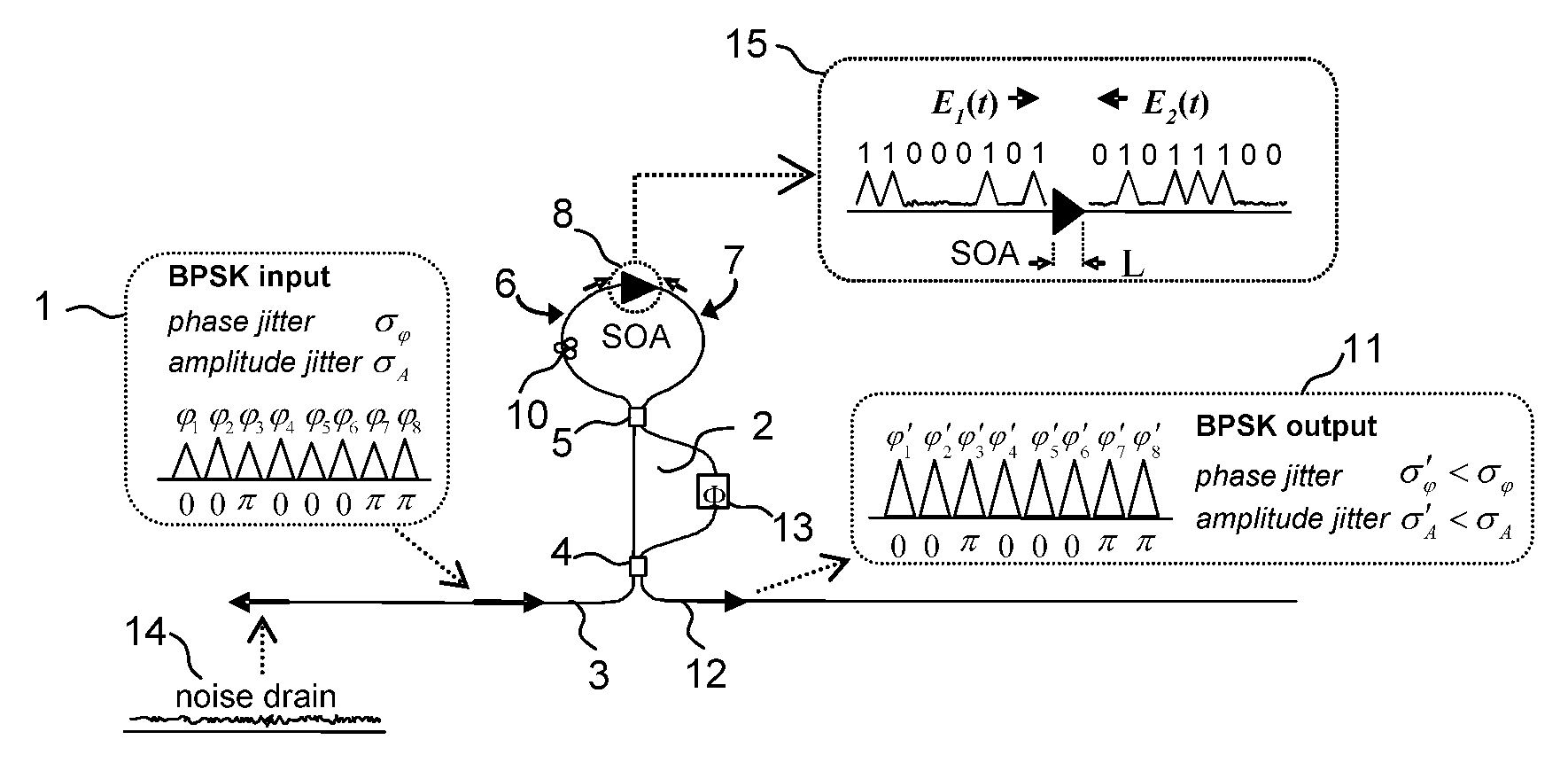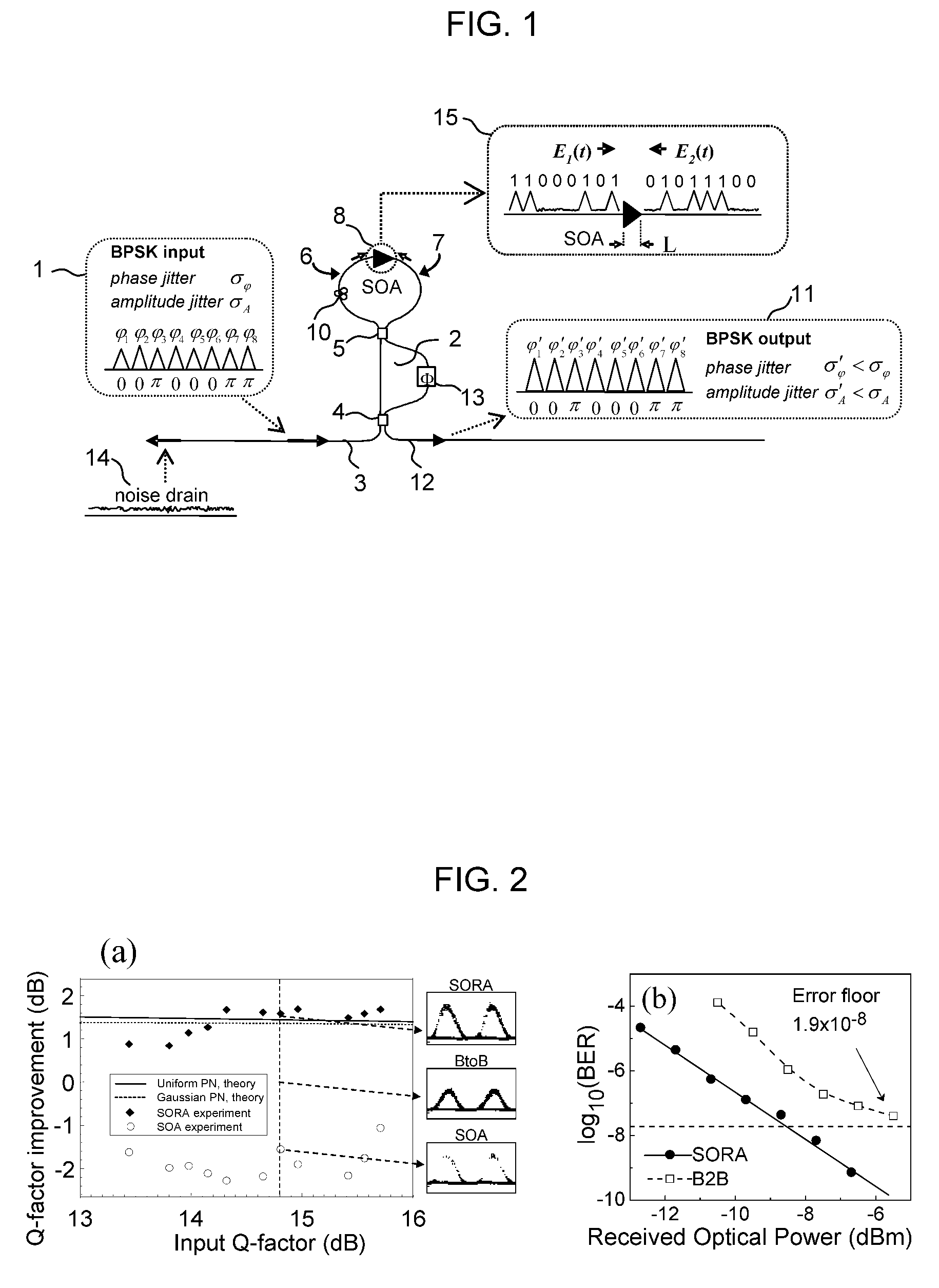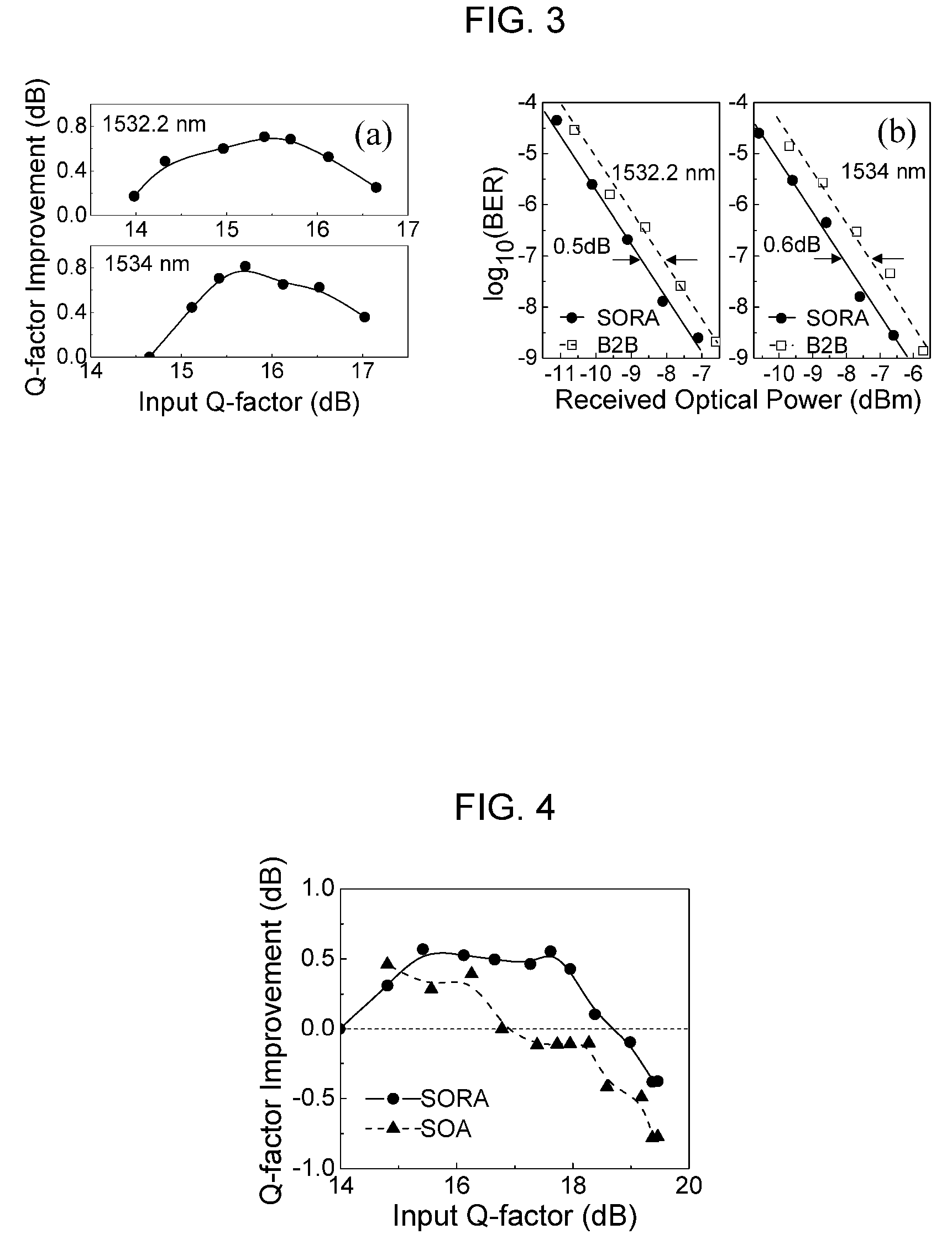Optical regenerative amplifier for binary phase shift-keying signals
a phase shift-keying signal and optical regenerative amplifier technology, applied in the direction of electromagnetic transmission, electrical equipment, transmission, etc., can solve the problems of inventions that cannot be used for regeneration of phase shift-keying optical signals, inventions that cannot be used for regenerating relative optical phases of transmitted signals, etc., to achieve the effect of improving signal-to-noise ratio and reducing phase and amplitude nois
- Summary
- Abstract
- Description
- Claims
- Application Information
AI Technical Summary
Benefits of technology
Problems solved by technology
Method used
Image
Examples
Embodiment Construction
[0022] The optical regenerative amplifier claimed in this invention enables regeneration of the relative optical phase of the transmitted signals by means of interfering the adjacent optical signals in a delay interferometer, suppressing the residual destructive interference product relative to the constructive interference product, and amplifying the constructive interference product in a limiting amplifier, thereby forcing the relative optical phase in any pair of optical signals to be either 0 or π radian and equalizing the amplitudes of the optical signals. Therefore the present optical regenerative amplifier can be used for optical regeneration of the optical phase shift-keying signals.
[0023]FIG. 1 illustrates a device and method for performing all-optical regeneration of multiple signals comprising a sequence of optical BPSK signals (pulses). The BPSK signals may be parts of the QPSK signals (pulses) with at least two signals (pulses), wherein the relative phase between the a...
PUM
 Login to View More
Login to View More Abstract
Description
Claims
Application Information
 Login to View More
Login to View More - R&D
- Intellectual Property
- Life Sciences
- Materials
- Tech Scout
- Unparalleled Data Quality
- Higher Quality Content
- 60% Fewer Hallucinations
Browse by: Latest US Patents, China's latest patents, Technical Efficacy Thesaurus, Application Domain, Technology Topic, Popular Technical Reports.
© 2025 PatSnap. All rights reserved.Legal|Privacy policy|Modern Slavery Act Transparency Statement|Sitemap|About US| Contact US: help@patsnap.com



